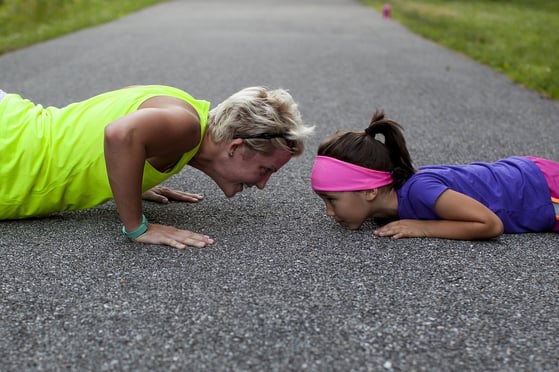Back to articles
Smart clothes and wearable technology: Just for professional athletes?

Advances in technology mean that smart clothes are moving away from the preserve of fitness fanatics and heading squarely into the mainstream. But what if our clothes could tell us not only how we’re doing but how they’re doing as well?
The next step for shoes
Activity trackers worn on the wrist can be notoriously inaccurate. We move our hands and arms all the time, whether we’re walking or not, and it’s left to an algorithm to decide whether these movements are recorded as steps or something else. Many fitness companies are starting to provide activity trackers that are attached, or even built into, shoes. This gives a much more accurate picture of actual activity.
With activity trackers built into shoes, the possibilities are there to extend this functionality much further. We tend to keep using shoes long after they should have been replaced. Until there’s a hole in the sole and we end up with wet socks we’re likely to keep wearing them.
As soon as we first wear a pair of shoes, whether it’s a pair of trainers or a hand-crafted pair of Italian brogues, they start to wear. For a while they’re ‘wearing in’ and adapting to our feet but before too long they start to wear out. The material in the insole starts to compress and the sole starts to wear thin.
Most sportswear companies recommend replacing running shoes every 400-500 miles. With an accurate activity tracker this become a much easier thing to do. Most runners will keep track of individual runs but rarely take note of how many miles they’ve accumulated.
Smart shoes could go even further. Sensors in the insole could analyze things such as wear patterns and compression on the cushioning to help consumers choose better running shoes in future that will protect their feet better.
Read also: Wearable product security: What you need to know
Moisture sensors could indicate if shoes have properly dried out between use, helping to avoid undue wear and tear and build-up of bacteria.
Jackets Keep Themselves Warm
Sensors in smart shirts and jackets can tell us many things about our bodies. Temperature, moisture levels, and muscle stress can all be monitored helping us take steps to correct issues before they become a real problem.
Jackets for sports such as skiing or hiking need to do two main things – keep us warm and keep us dry. Sensors woven into the fabric could alert us to things like microscopic tears that could let in cold air or water and reduce their effectiveness. Users could then get the jacket repaired or replaced before it becomes a major problem.
Spare your blushes
Trousers are prone to wearing out without us noticing. Constant wear along the seams can lead to sudden – and embarrassing – wardrobe malfunctions. Sensors that monitor strain on the seams and wear in the fabric could let us know that we should replace them before something gives way.
Self-protecting sportswear
Helmets and protective gear worn by American Football players are there to reduce the risk of injury and save lives. It’s vitally important that these are replaced if they’re damaged but often it’s not obvious that serious damage has been sustained. Wearing equipment that has been weakened could have very serious consequences.
Sensors in helmets or shoulder pads, for example, could warn users if they’ve received an impact which is likely to have seriously weakened the structure. This could keep players off the physio’s table and on the field making it a very attractive prospect to all contact sports players.
Another group that could benefit from this is cyclists and motorcyclists. On busy roads, a helmet can be the difference between life and death. If a helmet receives a severe impact, it’s recommended that it’s replaced straight away. But multiple small impacts in the same spot – say a cyclist drops their helmet on the floor a few times – could also cause serious damage to the helmet without any visible signs.
Boxers can receive hundreds of hits to the face over the course of a fight. Sensors embedded in a gum-shield could keep track of this impact and have two very obvious benefits. Firstly they will help the boxer know if they’re vulnerable in a specific spot to help them work on their guard. Secondly they can let the boxer know if the gum-shield itself is holding up and protecting their mouth effectively. With real-time monitoring, coaches could swap out the gum-shield during a fight if it starts to lose its protectiveness.
With wearables shifting more and more towards clothing, it’s obvious that the benefits extend way beyond just measuring things about the wearer. The market continues to grow and we could soon live in a world where our clothes order their own replacements!
Read also: 6 wireless technologies for wearables


